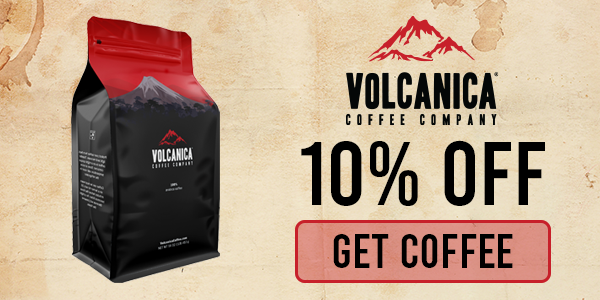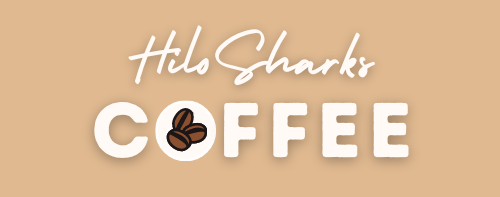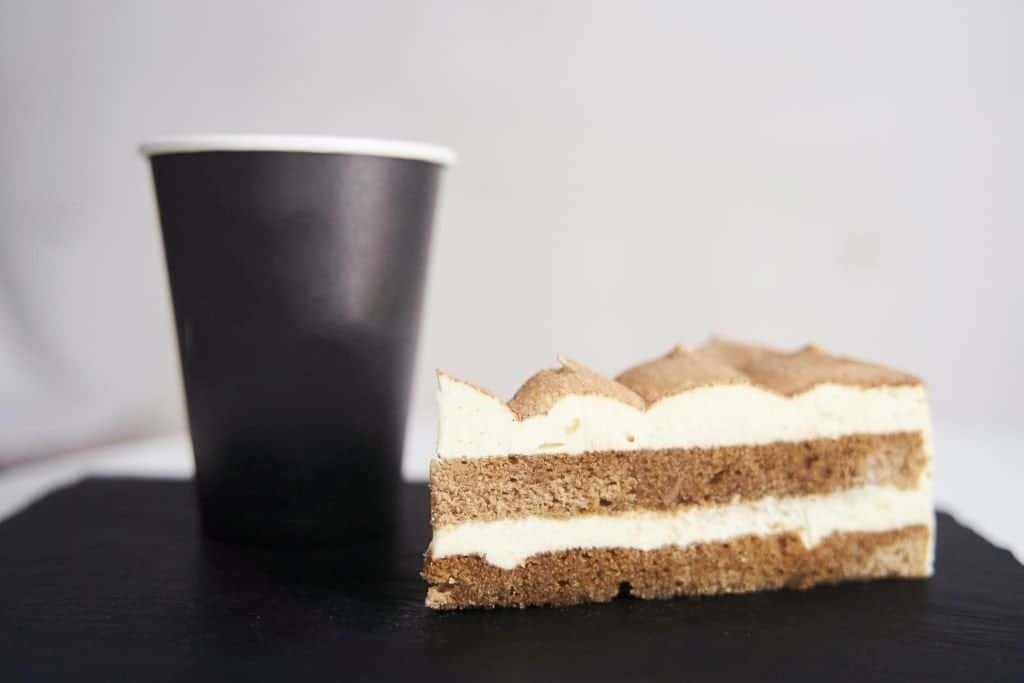A good cup of coffee can make or break your morning, setting the tone for the rest of the day. For many, pour over coffee is the go-to method for enjoying a delicious, aromatic brew.
However, a common issue that plagues coffee enthusiasts is weak pour over coffee that lacks the robust flavor and depth they crave. If you’re left wondering, “Why is my pour over coffee weak?” you’re not alone.
In this blog, we will dive into the world of pour over brewing and uncover the secrets to a bolder, more satisfying cup of coffee. By sharing 10 expert tips, we’ll help you identify the factors contributing to weak coffee and provide actionable steps to transform your pour over experience.
Say goodbye to weak coffee and elevate your morning routine with the perfect brew!
Why is pour over coffee weak?
Before diving into our tips for a bolder brew, it’s important to understand the factors that contribute to weak pour over coffee. The pour over brewing process is a delicate balance of coffee bean quality, grind size, water temperature, brewing time, and technique. When one or more of these elements is off, it can result in a weak or under-extracted cup of coffee.
Factors that contribute to weak coffee:
1. Low-quality or stale coffee beans
2. Incorrect coffee-to-water ratio
3. Improper coffee grind size
4. Incorrect water temperature
5. Inconsistent pouring technique
6. Inadequate bloom time
7. Insufficient brewing time
8. Use of an unsuitable filter
9. Dirty or poorly maintained equipment
10. Inaccurate measurement of coffee and water
Understanding the pour over brewing process:
Pour over brewing is a manual coffee-making method that involves pouring hot water over coffee grounds in a filter. The water flows through the grounds, extracting flavors and oils before dripping into a carafe or mug below. Because this method relies on precise control of various factors, it’s essential to master each aspect to achieve a rich, full-bodied cup of coffee.
Now that we have a basic understanding of the factors affecting pour over coffee, let’s explore our 10 tips for a bolder brew that will help you elevate your coffee experience.
Tip 1: Choosing the right coffee beans
A significant factor in the taste and strength of your coffee is the quality and type of coffee beans you choose. To brew a bolder, more flavorful cup, consider the following:

Importance of quality beans:
- Opt for fresh, high-quality beans from a reputable roaster.
- Purchase whole beans and grind them just before brewing to ensure maximum freshness and flavor.
Roast levels and their impact on flavor:
- Light roasts: These beans have a lighter body and higher acidity, often resulting in a more delicate flavor profile. They may not provide the boldness you’re looking for in your coffee.
- Medium roasts: Offering a balanced flavor, medium roasts can bring out the unique characteristics of the coffee beans, such as fruity or chocolatey notes, while still providing a somewhat bold taste.
- Dark roasts: If you’re after a bolder, more robust flavor, consider using dark roast beans. These beans have lower acidity and feature a fuller body, with strong, bold flavors that can shine through in your brew.
By selecting fresh, high-quality coffee beans and experimenting with different roast levels, you can create a more flavorful and robust cup that aligns with your taste preferences.
Tip 2: Coffee-to-water ratio

Getting the right coffee-to-water ratio is crucial for achieving the desired strength and flavor in your pour over brew. Here’s what you need to know:
Importance of proper proportions:
- Using too little coffee or too much water can result in a weak, diluted cup.
- On the other hand, using too much coffee or too little water can lead to over-extraction and a bitter taste.
Recommended ratios for pour over brewing:
- A general guideline is to use a 1:15 to 1:17 coffee-to-water ratio (1 gram of coffee for every 15 to 17 grams of water).
- If you prefer a stronger, bolder cup, try using a 1:14 or 1:15 ratio.
- For a lighter, more delicate brew, opt for a 1:16 or 1:17 ratio.
- Experiment with different ratios to find the perfect balance that suits your taste preferences.
Using a digital scale to measure both your coffee and water can help you achieve a consistent, perfectly balanced cup of pour over coffee every time. Don’t be afraid to tweak the ratio to your liking, as personal taste can vary.
- #PRECISE MEASUREMENT & WIDE RANGE# – KitchenTour EK6002 defines the latest in precision weighing technology with a weight capacity from 0.3g – 3000g to help you measure and get an exceptional cup of…
- #MULTI-FUNCTIONAL COFFEE & FOOD SCALE# – The electronic coffee scale has a built-in timer to cook and time your coffee to ensure the consistency of each cup of coffee. With Tare Function, You can add…
- #SUPERIOR QUALITY MATERIAL# – This Kitchen Drip Coffee Scale is crafted to be sturdy, accurate, safe, and user-friendly. Constructed with a high-quality ABS platform and frame, this digital kitchen…
Tip 3: Proper coffee grind Size

The grind size of your coffee beans plays a crucial role in the extraction process and can significantly impact the taste of your pour over brew.
Importance of grind consistency:
- An inconsistent grind can lead to uneven extraction, resulting in a mix of weak, under-extracted coffee and bitter, over-extracted flavors.
- A consistent grind helps ensure even extraction, delivering a more balanced and enjoyable cup.
Finding the ideal grind size for pour over:
- For pour over brewing, aim for a medium-fine grind, similar in texture to table salt. This grind size allows for optimal extraction, balancing the rate of water flow and the extraction of flavors from the coffee grounds.
- Experiment with slight adjustments to the grind size, as different coffee beans and brewing equipment may require fine-tuning to achieve the best results.
- Invest in a high-quality burr grinder, which provides a more consistent grind compared to a blade grinder.
By focusing on grind consistency and finding the ideal grind size for your pour over brewing setup, you’ll be one step closer to a bolder, more satisfying cup of coffee.
- Electric coffee bean grinder appliance for home use
- Can grind 30 grams/1 ounce of beans for drip coffee brewing in 10 seconds
- Grind coffee beans, herbs, spices, grains, nuts, and more
Tip 4: Water temperature
The temperature of the water you use for brewing your pour over coffee can significantly affect the extraction process and the final taste of your cup.
The role of temperature in extraction:
- Water that’s too hot can lead to over-extraction, resulting in a bitter, unpleasant taste.
- Water that’s too cool can cause under-extraction, producing a weak and sour cup.
Ideal water temperature for pour over brewing:
- Aim for a water temperature between 195°F to 205°F (90°C to 96°C) for optimal extraction.
- If you don’t have a thermometer, bring the water to a boil and let it sit for 30 seconds before pouring it over the coffee grounds.
- Consider investing in a gooseneck kettle with a built-in thermometer for precise temperature control.
By maintaining the ideal water temperature during the brewing process, you’ll ensure a well-extracted, full-bodied pour over coffee with a balanced flavor profile.
- Pour-Over Kettle: Ideal for loose leaf teas and coffees. With a 27-ounce capacity, this stainless steel kettle allows for more pouring and less refilling, plus it has a lovely gooseneck profile
- Gooseneck Spout: Featuring a chic gooseneck spout and an ergonomic, comfort-grip handle, this handle gives you total control over the flow for flawlessly smooth soaking
- Triple Layer Base: Stainless steel prevents corrosion, while aluminum facilitates rapid and uniform heating. Appropriate for gas-powered cooking surfaces only.
Tip 5: Pre-wetting the coffee grounds
Pre-wetting, also known as “blooming,” is a crucial step in the pour over brewing process that can help improve the taste and strength of your coffee.
Benefits of pre-wetting:
- Pre-wetting allows the coffee grounds to release carbon dioxide, which can negatively affect the extraction process and the taste of your coffee.
- This process helps promote even extraction, resulting in a more balanced and flavorful cup.
How to properly pre-wet your coffee grounds:
- Start by pouring just enough hot water (at the ideal temperature) to wet all the coffee grounds evenly, using a gentle, circular motion.
- Wait for about 30-45 seconds, allowing the coffee to “bloom” and release carbon dioxide.
- After the bloom, continue pouring the remaining water over the grounds in a steady, controlled manner.
Incorporating pre-wetting into your pour over brewing routine can enhance the overall quality of your coffee, contributing to a richer, bolder, and more satisfying cup.
Tip 6: Pouring technique

Improving your pouring technique can have a significant impact on the extraction process and the final taste of your pour over coffee.
- Use a gooseneck kettle for better control over the water flow.
- Pour the water in a slow, steady, and controlled manner, using a circular motion to ensure even coverage of the coffee grounds.
By perfecting your pouring technique, you’ll promote even extraction and create a more balanced and flavorful cup of coffee.
Tip 7: Bloom time
Bloom time, or the duration of the pre-wetting process, plays a role in the overall taste and strength of your pour over coffee.
- Allow the coffee grounds to bloom for about 30-45 seconds to release carbon dioxide and ensure even extraction.
- Experiment with different bloom times to find the optimal duration for your specific coffee beans and taste preferences.
Adjusting bloom time can help enhance the flavor and boldness of your pour over coffee, contributing to a more satisfying brew.
Tip 8: Brewing time
The total brewing time affects the strength and flavor profile of your pour over coffee.
- Aim for a total brewing time of 3 to 4 minutes, including the pre-wetting process, for a well-extracted, full-bodied cup.
- Adjust brewing time as needed based on your taste preferences and the specific coffee beans you’re using.
Finding the ideal brewing time for your pour over coffee can lead to a more enjoyable and bold cup that suits your taste preferences.
Tip 9: Using the right filter

The type of filter you use in your pour over brewing setup can influence the taste and strength of your coffee.
Paper vs. metal filters:
- Paper filters tend to absorb more oils and fine coffee particles, resulting in a cleaner and brighter cup with less body.
- Metal filters allow more oils and fine coffee particles to pass through, producing a bolder, more full-bodied brew.
How filter type affects coffee flavor:
- Experiment with different filter types to determine which one best suits your taste preferences.
- Keep in mind that the right filter choice can vary based on the specific coffee beans and roast levels you’re using.
Choosing the right filter for your pour over brewing can help you achieve the desired strength and flavor profile, contributing to a more satisfying coffee experience.
- Filters fit all 8-12 cup Basket-type household coffeemakers.
- Package Dimensions: 11.69 x 6.5 x 5.94 inches
- Country Of Origin : US
Tip 10: Cleaning and maintenance
Keeping your pour over equipment clean and well-maintained can impact the quality and taste of your coffee.
Keeping your pour over equipment clean:
- Regularly clean your brewing equipment, including the grinder, filter holder, and carafe or mug, to prevent the buildup of coffee oils and residue.
- Rinse paper filters with hot water before use to remove any paper taste that could affect your coffee’s flavor.
How regular maintenance affects coffee quality:
- Clean and well-maintained equipment ensures that no lingering flavors or contaminants interfere with the taste of your coffee.
- Regularly check your grinder for wear and tear, and replace any worn-out parts as needed.
By maintaining and cleaning your pour over brewing equipment, you can consistently enjoy a high-quality, bold, and flavorful cup of coffee.
Conclusion
Pour over brewing is an art that requires attention to detail and a keen understanding of the many factors that contribute to the strength and taste of your coffee.
By following the tips we’ve shared in this blog, you can transform your weak pour over coffee into a bolder, more satisfying brew that elevates your daily coffee experience.
Remember, the key to the perfect cup of coffee is experimentation and personalization. Don’t be afraid to adjust variables such as coffee-to-water ratio, grind size, water temperature, and brewing time to suit your specific taste preferences.
With a little patience and practice, you’ll soon master the art of pour over brewing, achieving the ideal cup of coffee that makes every morning a little bit brighter. Cheers to a bolder brew!








